Search
Search Results
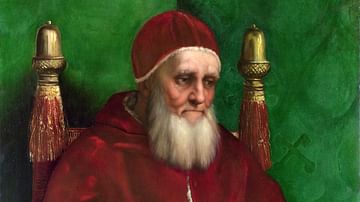
Image
Pope Julius II by Raphael
A portrait of Pope Julius II (r. 1503-1513 CE) by the Italian Renaissance artist Raphael, c. 1512 CE. (National Gallery London)
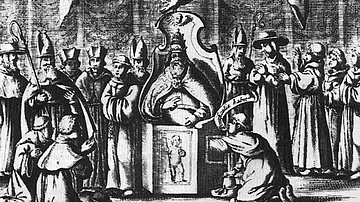
Image
Physical Examination of a New Pope
A 1645 illustration showing a cardinal checking that Pope Innocent X (in office 1644-55) is indeed a man.

Article
Medieval Indulgence & Martin Luther
The medieval indulgence was a writ offered by the Church, for money, guaranteeing the remission of sin, and its abuse was the spark that inspired Martin Luther's 95 Theses. Luther (l. 1483-1546) claimed the sale of indulgences was unbiblical...
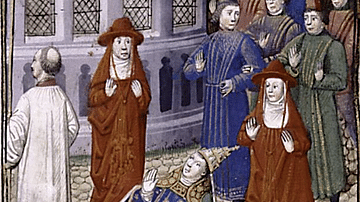
Image
Pope Joan Giving Birth
A c. 1450 illustration showing Pope Joan giving birth during a procession. Pope Joan was a legendary female pope of the Middle Ages said to have reigned from 855 to 858. Her existence is disputed. (Spencer Collection)

Image
Portrait of a Humanist: Leo Africanus
Portrait of a Humanist by Sebastiano del Piombo c. 1520. The identity of the person is unknown. Dietrich Rauchenberger has suggested that the painting may depict Leo Africanus (1485-1554).
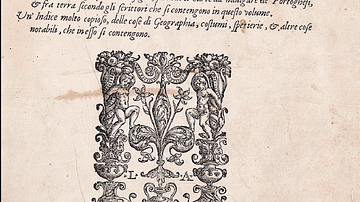
Image
The History and Description of Africa by Leo Africanus
An early title page from The History and Description of Africa by Leo Africanus (1485-1554), first published in 1526.

Image
Leo Lesquereux
Leo Lesquereux, 19th-century paleobotanist, image by an unknown artist, published in Popular Science Monthly April 1887.
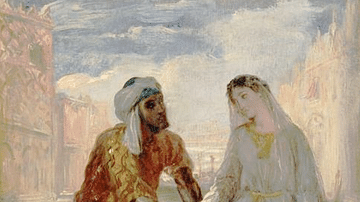
Image
Leo Africanus as Shakespeare's Othello
Many scholars, without concrete evidence, believe that Leo Africanus 1485-1554 was the inspiration behind William Shakespeare’s Othello, shown here with Desdemona in an 1849 painting by Théodore Chassériau, currently in the Louvre Museum...
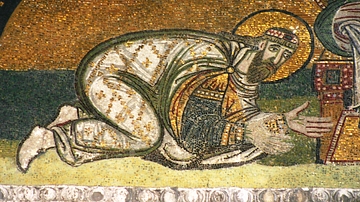
Image
Leo VI
A penitent Leo VI, Byzantine emperor 886-912 CE, from a mosaic in the Hagia Sophia, Istanbul.
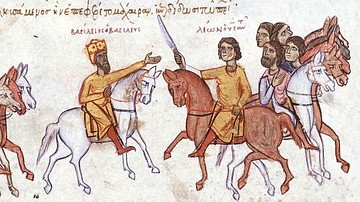
Image
Basil I & Leo VI Confront Each Other
A 13th century CE illustration showing Byzantine emperor Basil I (r. 867-886 CE) confronting Leo VI, his son, murderer and successor. (Madrid Sklitzes, National Library, Madrid)